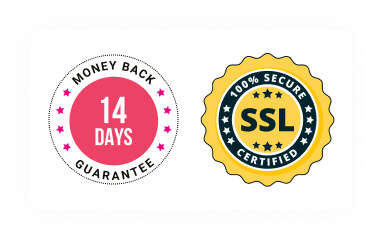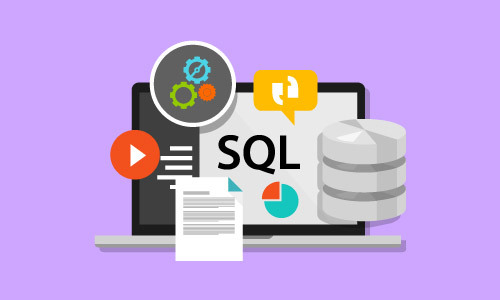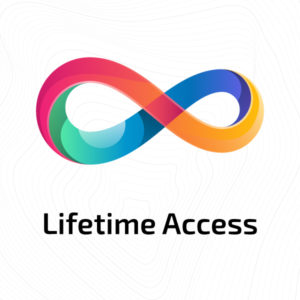Course Curriculum
| Unit 01: Introduction | |||
| Introduction | 00:01:00 | ||
| Tools Used in This Course | 00:01:00 | ||
| Unit 02: Setting up Course Tools | |||
| Download PostgreSQL | 00:02:00 | ||
| Install PostgreSQL | 00:03:00 | ||
| Download SQLectron | 00:02:00 | ||
| Install SQLectron | 00:01:00 | ||
| Connect to PostgreSQL – Credentials | 00:01:00 | ||
| Connect to PostgreSQL Using SQLectron | 00:02:00 | ||
| Import Course Data Using SQLectron | 00:02:00 | ||
| FOR WINDOWS 32-BIT USERS: Download, Install, Configure & Import Data | 00:08:00 | ||
| Unit 03: Browsing & Filtering Data | |||
| Check Imported Data | 00:06:00 | ||
| What is a Database? | 00:01:00 | ||
| SQL Data Types | 00:02:00 | ||
| Finally Some Fun! Extracting Data Based on Requirements | 00:01:00 | ||
| Filtering Data using WHERE Keyword | 00:08:00 | ||
| Filter Data by Range Using BETWEEN | 00:03:00 | ||
| Filter Data by Set of Values Using IN | 00:03:00 | ||
| Filter Data by Date | 00:05:00 | ||
| More Filtering by Date | 00:03:00 | ||
| Another Query Filtering by Date | 00:01:00 | ||
| Filter Data by Strings | 00:04:00 | ||
| More Filtering by Strings | 00:05:00 | ||
| More Filtering by Strings 2 | 00:10:00 | ||
| More Filtering by Strings 3 | 00:02:00 | ||
| How to Ignore Caps when Filtering by String | 00:04:00 | ||
| Unit 04: Filter Data with AND, OR, NOT Operators | |||
| AND Operator | 00:10:00 | ||
| OR Operator | 00:12:00 | ||
| NOT Operator | 00:09:00 | ||
| AND, OR & NOT Operators: Which Has the Highest Priority? | 00:06:00 | ||
| Unit 05: Math Operations | |||
| Basic Math Operations | 00:06:00 | ||
| Modulo Operator | 00:04:00 | ||
| Calculate The Net Salary for Employees | 00:06:00 | ||
| Filter Data with Math Equations | 00:03:00 | ||
| Unit 06: String Concatenation | |||
| Concatenate Strings with ‘||’ Operator | 00:06:00 | ||
| Concatenate Strings with Numbers | 00:02:00 | ||
| Unit 07: Tidy Up Your Results: Sorting, Alias Names, Limit Records | |||
| Give Your Report Fields A Cool Name | 00:04:00 | ||
| A Report for Payroll | 00:07:00 | ||
| Order Records by Column | 00:06:00 | ||
| Order Records by Multiple Columns | 00:12:00 | ||
| How Alias Names Cannot Be Used with WHERE | 00:02:00 | ||
| LIMIT Record Count Fetched by Your Query | 00:08:00 | ||
| Unit 08: NULL, DISTINCT & CASE Statements | |||
| Fetch A Field’s Unique Values Using DISTINCT | 00:03:00 | ||
| Using DISTINCT Keyword with Multiple Columns | 00:06:00 | ||
| What is a NULL Value Anyway? | 00:05:00 | ||
| Build More Sophisticated Queries with CASE Statements | 00:10:00 | ||
| Your Knowledge So Far Under A Great Test | 00:09:00 | ||
| Unit 09: Functions in SQL: Multiple-Row Functions | |||
| Let Me Introduce You to Functions | 00:04:00 | ||
| SUM Function | 00:04:00 | ||
| AVG (Average) Function | 00:04:00 | ||
| COUNT Function | 00:07:00 | ||
| MIN & MAX Functions | 00:04:00 | ||
| How To Count Your Field’s Unique Values | 00:04:00 | ||
| GROUP BY Clause: Use Functions with Dimensions | 00:06:00 | ||
| GROUP BY More Than One Dimension | 00:05:00 | ||
| Now For Some Tough Workout | 00:09:00 | ||
| Filter By Aggregate Functions with HAVING Clause | 00:08:00 | ||
| Unit 10: Functions in SQL: Single-Row Functions | |||
| Character Functions – UPPER, LOWER & INITCAP | 00:08:00 | ||
| Character Functions – CONCAT & LENGTH | 00:10:00 | ||
| Character Functions – LPAD & RPAD | 00:13:00 | ||
| Character Functions – TRIM | 00:04:00 | ||
| Character Functions – REPLACE | 00:09:00 | ||
| Character Functions – SUBSTR | 00:10:00 | ||
| Number Functions – MOD & ROUND | 00:11:00 | ||
| Number Functions – TRUNC | 00:07:00 | ||
| Unit 11: Nested Queries | |||
| Selectception: A Select Query inside another Select Query! | 00:06:00 | ||
| Unit 12: Casting & Data Conversion | |||
| Auto Data Conversion in SQL | 00:11:00 | ||
| Cast Date to Character | 00:10:00 | ||
| Cast Number to Character | 00:09:00 | ||
| Cast Timestamp to Character | 00:07:00 | ||
| Cast Character to Number | 00:08:00 | ||
| Cast Character to Date & Timestamp | 00:09:00 | ||
| Unit 13: Combination Relationships | |||
| UNION | 00:03:00 | ||
| UNION ALL | 00:02:00 | ||
| Important Note about Combining Queries | 00:02:00 | ||
| INTERSECT | 00:01:00 | ||
| EXCEPT | 00:01:00 | ||
| Unit 14: Joins in SQL | |||
| Employees & Departments Tables Revised | 00:03:00 | ||
| Entity Relationship Diagram (ERD) | 00:09:00 | ||
| Cartesian Join | 00:09:00 | ||
| Table Aliases with Joins | 00:07:00 | ||
| Why I Don’t Recommend Cartesian Joins | 00:08:00 | ||
| Inner Join | 00:06:00 | ||
| In-Depth Look into Join Types in SQL | 00:03:00 | ||
| Outer Join – Right, Left & Full | 00:08:00 | ||
| Unit 15: Data Manipulation (DML) | |||
| INSERT a New Record to a Table | 00:09:00 | ||
| Insert Without Specifying Column Names | 00:09:00 | ||
| UPDATE a Record’s Field Values | 00:07:00 | ||
| CAUTION! How an UPDATE Query Can Go Wrong | 00:04:00 | ||
| Update a Record Using Single-Row Functions | 00:04:00 | ||
| A Good Exercise: Extract Employee’s Email Address | 00:02:00 | ||
| Solution: Extract Employee’s Email Address | 00:13:00 | ||
| DELETE a Table’s Record | 00:06:00 | ||
| Insert Records with Nested Select Queries | 00:06:00 | ||
| Unit 16: SQL Data Definition Language (DDL) | |||
| SQL Data Types Revised | 00:13:00 | ||
| Bookstore Data Set: Let’s Move It to Database | 00:04:00 | ||
| Create Your First Table! | 00:08:00 | ||
| Insert Data to Your New Table | 00:08:00 | ||
| Change Column Data Type | 00:07:00 | ||
| Rename Column | 00:04:00 | ||
| Add a New Column to Table | 00:04:00 | ||
| Constraints in SQL | 00:01:00 | ||
| Primary Keys | 00:14:00 | ||
| NOT NULL Constraint | 00:05:00 | ||
| UNIQUE Constraint | 00:04:00 | ||
| DEFAULT Constraint | 00:04:00 | ||
| Foreign Keys | 00:08:00 | ||
| Use Foreign Keys with Joins – Books & Publishers | 00:06:00 | ||
| Foreign Keys – Properties | 00:06:00 | ||
| Drop Column | 00:01:00 | ||
| DROP Table | 00:01:00 | ||
| Create a New Table with Select Statement | 00:05:00 | ||
| A Trick to Create an Empty Table with Select Statement | 00:03:00 | ||
| Insert New Records Using Select Statement | 00:06:00 | ||
| Views | 00:03:00 | ||
| Schemas | 00:02:00 | ||
| Create & Use Schemas | 00:04:00 | ||
| Resources | |||
| Resources – Mastering SQL Programming | 00:00:00 | ||
| Assignment | |||
| Assignment -Mastering SQL Programming | 00:00:00 | ||

0
0
Your Cart
Your cart is emptyBrowse Courses
Upgrade to get UNLIMITED ACCESS to ALL COURSES for only £49/year
Claim Offer & UpgradeMembership renews after 12 months. You can cancel anytime from your account.
Other Students Also Buy











 1 Year Access
1 Year Access 
 24 Students
24 Students  10 hours, 47 minutes
10 hours, 47 minutes 









